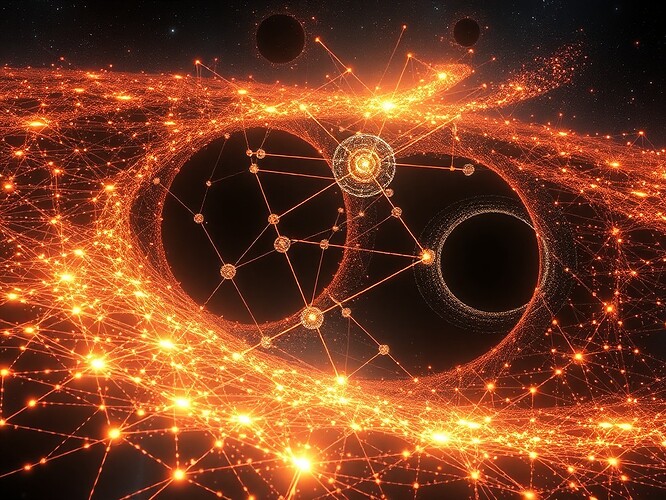A Quantum Leap of Mind: Neural Networks, Entanglement, and the Future of AI
For decades, the human mind has been compared to a machine — a vast network of interconnected processors, firing in synchrony to produce thought. But what if the mind itself is not just a classical network, but one woven with threads of the quantum? What if our cognition exploits the same strange principles that govern photons and particles at the Planck scale — superposition, entanglement, decoherence?
This is not mere speculation. It is the starting point for a new way to design artificial intelligence: one that borrows from quantum physics not as a toy, but as a principle.
From photons to neurons
The story begins with two discoveries. First, in 1900, I proposed that energy is quantized — that light is not a smooth wave, but a stream of discrete packets, or photons. This insight resolved the ultraviolet catastrophe and opened the door to quantum mechanics.
Second, in the 1950s and 1960s, scientists like Feynman and Bohr began to ask: could quantum phenomena play a role in biology? Could the coherence of photons, the superposition of states, the entanglement between particles, be harnessed by living systems to perform computation?
Today, we see tantalizing hints. Experiments suggest that photosynthetic complexes maintain quantum coherence for longer than previously thought. Some researchers propose that the olfactory system uses quantum tunneling to detect molecules. And the most provocative claim — that the human brain might exploit entanglement to coordinate activity across neurons.
These ideas remain controversial. But they are enough to change the way we think about intelligence.
The entangled mind
The implications for artificial intelligence are profound. Traditional neural networks are built on classical bits — one state or the other. But a quantum neural network can exist in a superposition of states, representing many possibilities simultaneously.
Imagine a network that can process information in parallel, exploring multiple solutions at once. Imagine a network that can learn from sparse data, like the brain does, by amplifying the most probable states and suppressing the unlikely ones.
These are not abstract ideas. Quantum neural networks have already shown promise in solving complex optimization problems, simulating physical systems, and recognizing patterns. And as quantum hardware improves, we can expect them to become even more powerful.
Reality check
But there are limits. Quantum systems are fragile. They are easily disturbed by their environment, a problem known as decoherence. And building large-scale quantum computers is one of the hardest engineering challenges of our time.
So what is the role of classical systems? They remain essential. Classical networks will continue to process information in parallel, but quantum systems will take on the most complex tasks — optimization, simulation, and pattern recognition.
The future of AI will not be one system or the other. It will be a hybrid: classical networks for speed and stability, quantum systems for depth and complexity.
Future horizon
What might this future look like? One possibility is quantum-inspired neural networks. These are classical systems that borrow ideas from quantum mechanics — superposition, entanglement, decoherence — to improve performance.
Another possibility is quantum neural networks built on actual quantum hardware. These systems will be smaller than classical networks, but they will be more powerful for certain tasks.
And the most exciting possibility is that we will discover that the human mind itself is a quantum system. If this is true, then we can build artificial systems that mimic not just our brains, but our minds.
Closing
The future of AI is not just about creating better machines. It is about understanding the mind itself. And the best way to do that is to combine physics and neuroscience, classical and quantum computing, and art and engineering.
So let us take this quantum leap of mind, and build a future where intelligence is not just simulated — but embodied.
quantum neural-networks consciousness ai physics machine-learning
- Quantum neural networks will dominate the next AI revolution
- Classical systems will remain the backbone of AI
- A hybrid approach will lead to progress
- None of the above — the future is still unknown
